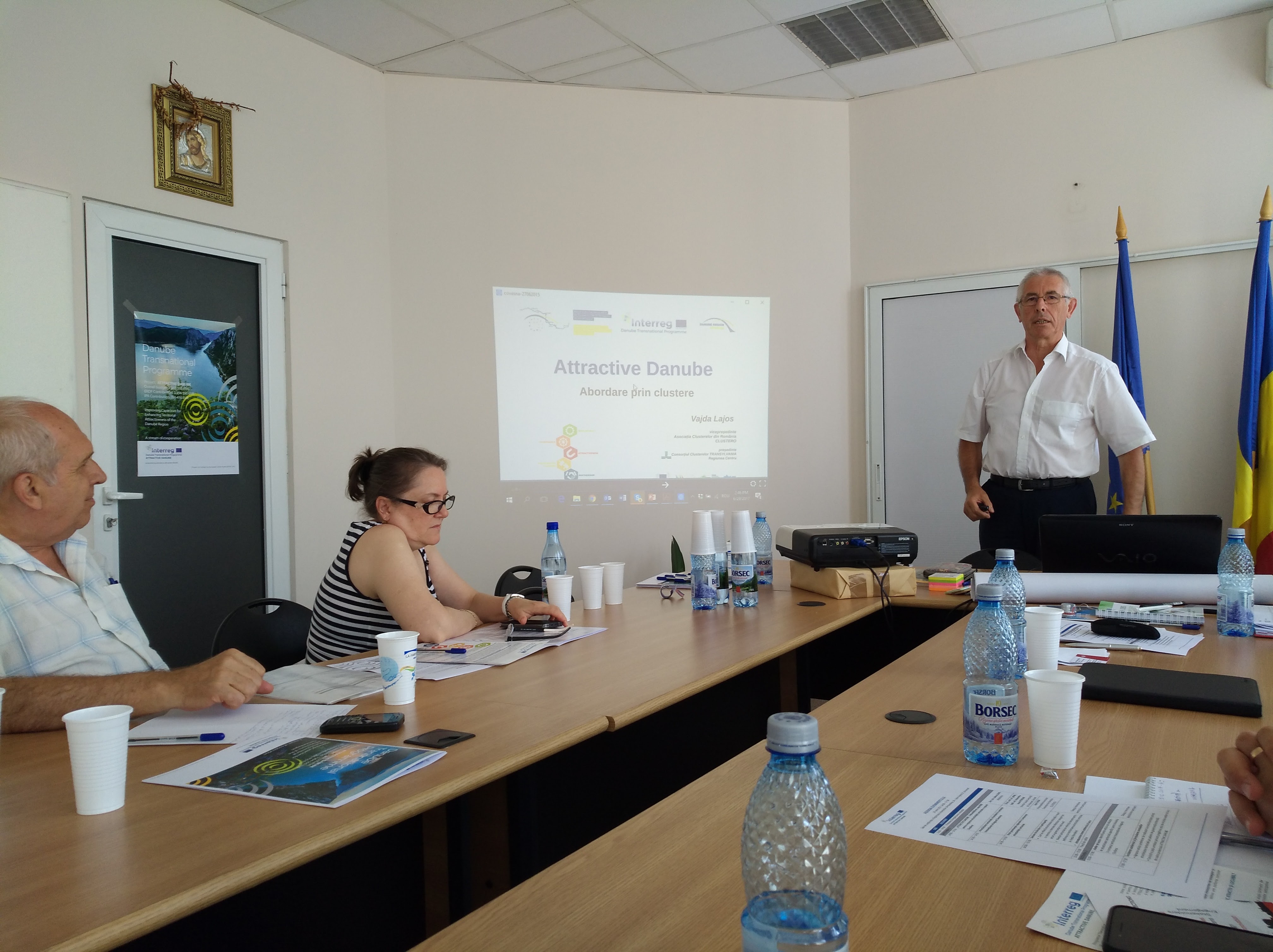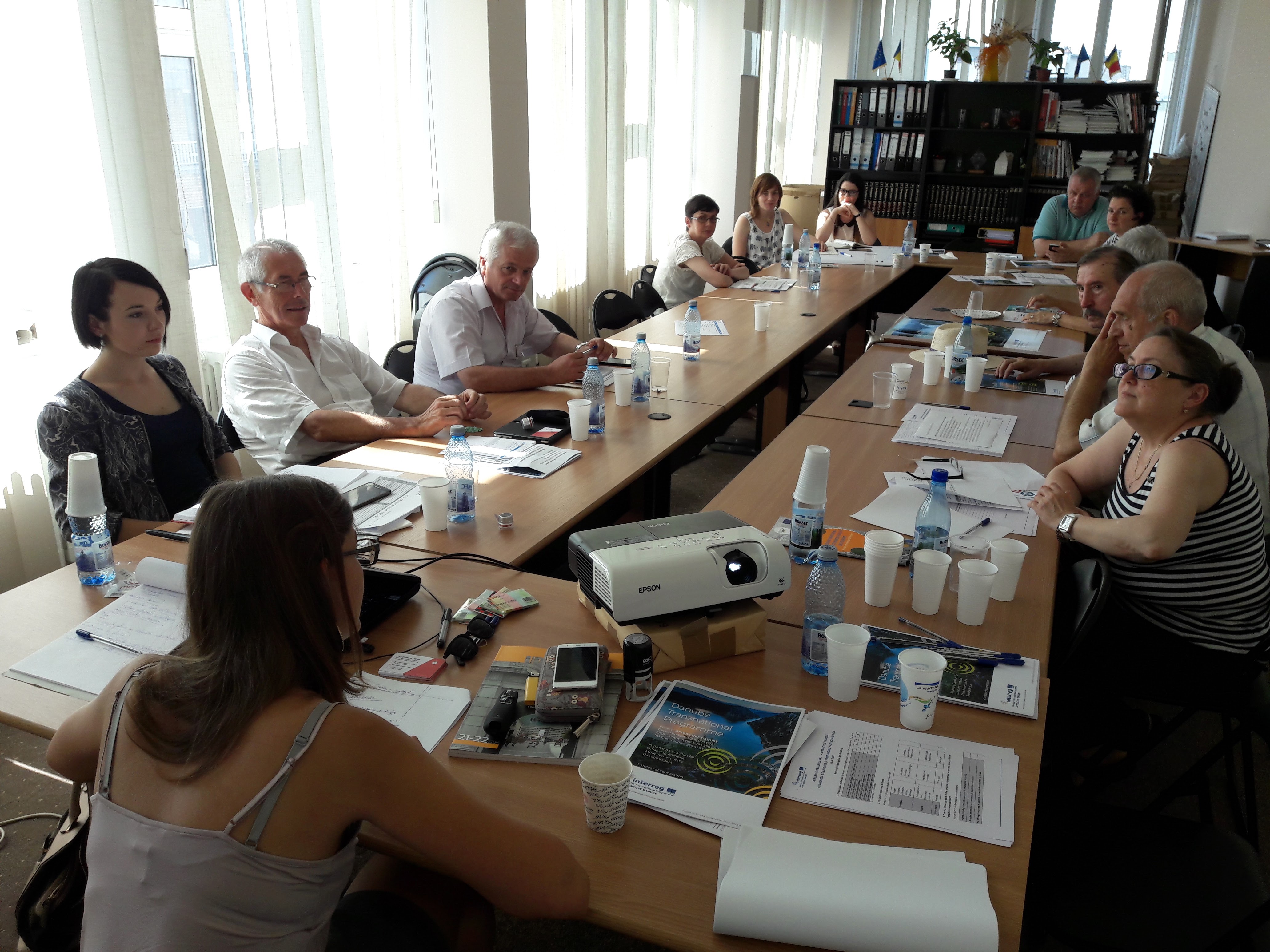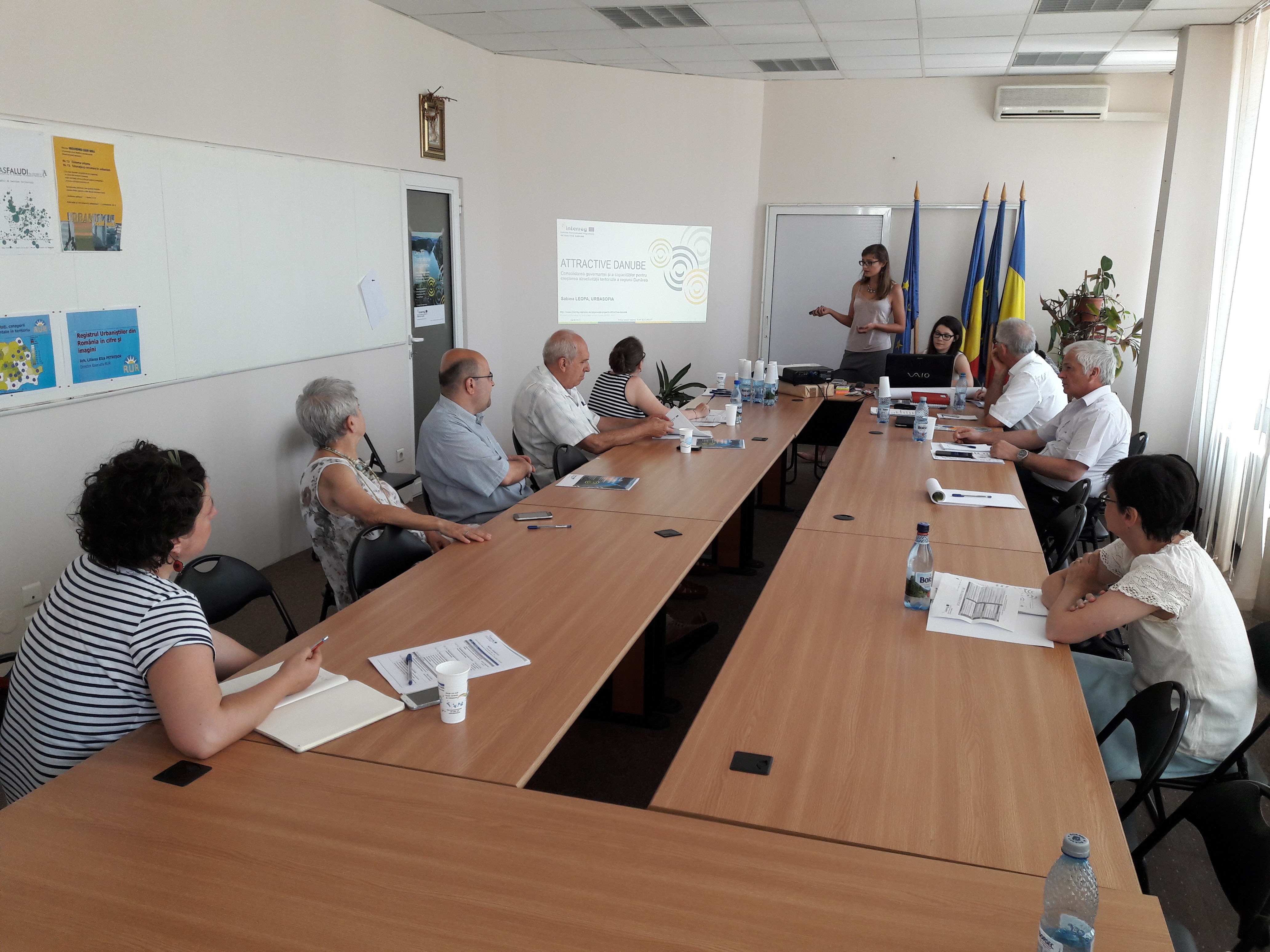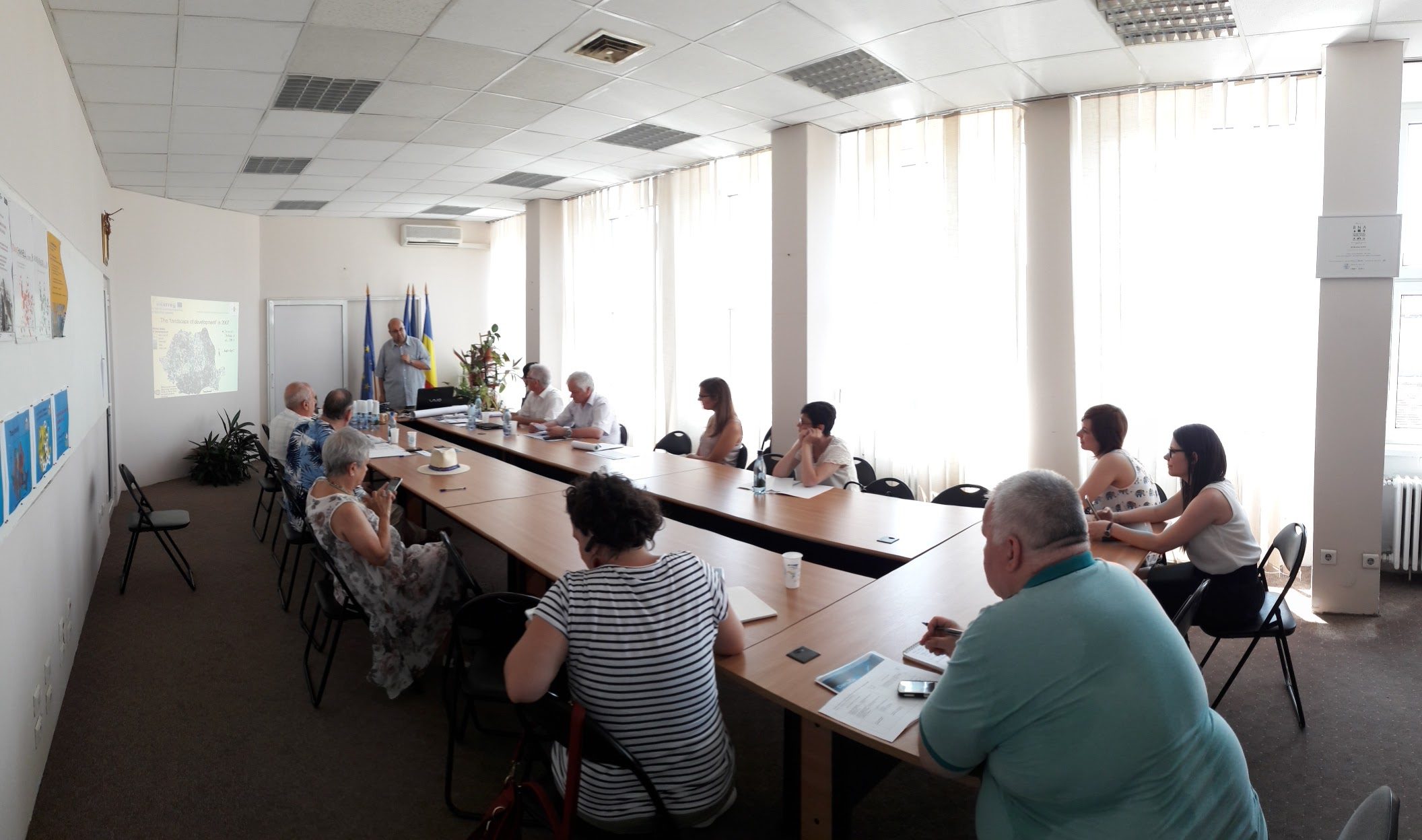We organized the first Romanian national workshop on the ATTRACTIVE DANUBE project (Improving the Capacity for Increasing the Territorial Attractiveness of the Danube Region) in Bucharest, on the 29th of June 2017, in collaboration with the Registry of Urban Planners in Romania, in the aim of discussing a key topic for policy makers, economy players and civil society at all levels: how to evaluate and monitor territorial attractiveness in Romania.
The workshop spanned 4 hours and two specific sessions:
- Presenting / familiarizing participants with the Attractive Danube Project and its aims, inviting professionals as speakers on the topic of tackling territorial attractiveness and consulting the participants’ views on the topic and the concept’s definition;
- Discussing and identifying a set of specific indicators for territorial attractiveness in Romania, able to support the various public policy planning processes of territorial planning and development.

The conclusion of the first Romanian workshop within the Attractive Danube Project highlighted some of the key elements regarding future steps in the project, including the next two national meetings to be implemented by December 2017 and the operational results of the project:
1. The set of 22 indicators defined by the ATTRACT-SEE project, if judged stand-alone, bear insufficient relevance for Romania as indicators of the territorial attractiveness of our country in the transnational context of the Danube Region; the indicators will need to be supplemented, through an open, inclusive and participatory process.
2. For Romania, it was emphasized the importance of defining a set of specific and detailed indicators for the Danube rivers (eg at the level of the Danube riparian counties), but without omitting the importance of the entire river basin covering the whole territory of our country ;
3. The evaluation questionnaires handed out to participants highlight, at the preliminary level, the following key messages on the content and organization of the following workshops on defining the set of indicators for monitoring and assessing the territorial attractiveness of Romania in the transnational context of the Danube Region. Illustrated according to the priorities of the EUSDR, the proposals discussed can be divided into the following categories of key indicators:
- Interconnecting the Danube Region
- Improving mobility and multimodality
- Accessibility indicators
- Encouraging sustainable energies;
- Environmental indicators
- Promoting culture and tourism, direct contacts between people
- Indicators on cultural background – intangible cultural heritage – traditions and customs
- Indicators on tourism potential
- Improving mobility and multimodality
- Protecting the environment in the Danube region
- Restoration and maintenance of water quality;
- Managing environmental risks;
- Conservation of biodiversity, landscapes and air and soil quality
- Natural environment indicators (for all categories)
- Increasing prosperity in the Danube region
- Developing knowledge-based society through research, education and information technologies;
- Supporting the competitiveness of enterprises, including the development of clusters;
- Investing in people and capabilities;
- Indicators on the potential of the business environment
- Strengthening the Danube Region
- Improving institutional capacity and cooperation;
- Indicators for urban and spatial planning tools;
- Working together to promote security and address organized crime and serious crime issues.
- Improving institutional capacity and cooperation;
In this context, it was reiterated that there are no adequate / relevant indicators on territorial attractiveness, as their relevance is being challenged in specialized studies.

During September 2017, the second national workshop will be organized, and for its preparation we will carry out the following next steps:
1. Widening the stakeholder group at Romanian level with the relevant actors / institutions involved in the process of substantiation of Romania’s planning and territorial development policies;
2. Preparation of an online questionnaire with a set of relevant questions regarding: the territorial attractiveness of Romania and the territorial capital of our country, the specific identification of the needs of the actors involved in the various public policy processes in territorial aspect, the definition of the indicators and indexes relevant to the evaluation and monitoring of Romania’s territorial attractiveness in the transnational context of the Danube Region.
Overall the first workshop was a very productive meeting, and we would like to thank all the participants for their openness and expert opinions!
Download below the presentations and full minutes (in Romanian) of the meeting:
- ATTRACTIVE DANUBE, Mrs. Sabina Leopa, URBASOFIA
- Territorial attractiveness of Romania in the trans-national context of the Danube Region, Mr. Alexandru-Ionut PETRISOR, PhD, PhD, Habil., director of the Urbanism Doctoral School, UAUIM
- Attractive Danube – the Cluster Approach, Mr. Vajda Lajos, Vicepresident of the Romanian Clusters Association
- FULL MEETING MINUTES
URBASOFIA


